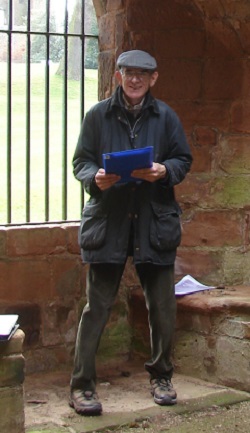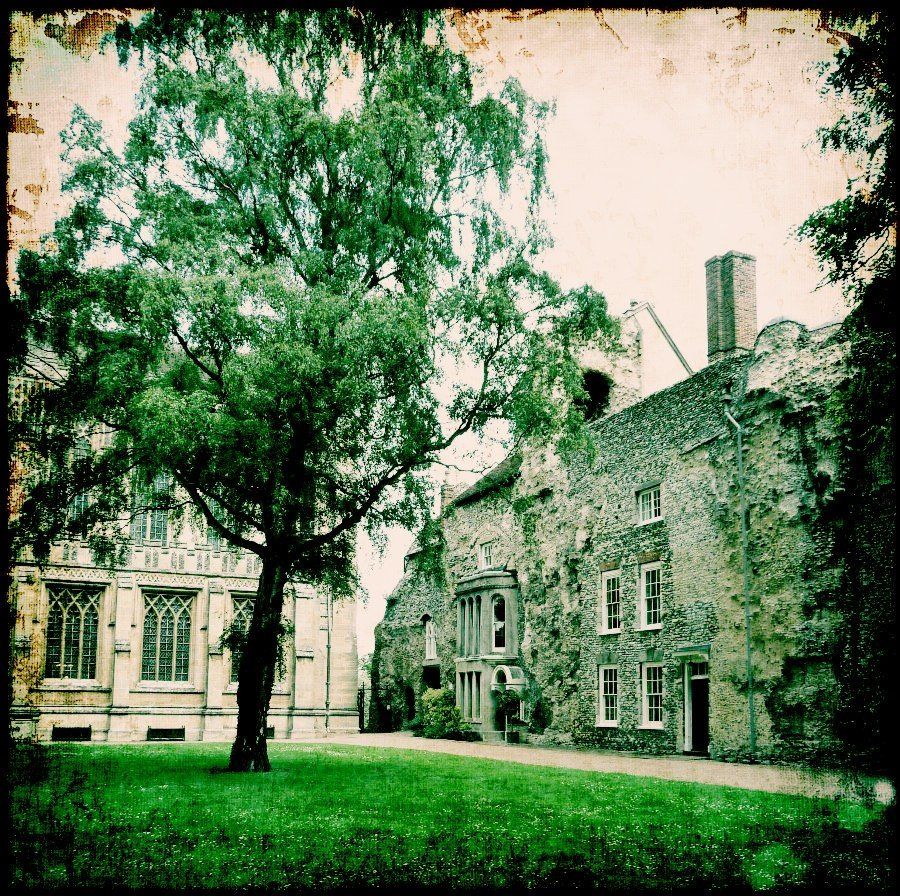Dr Richard Morris and medieval inspiration
 The wonderful and inspirational Dr Richard Morris, who ran the Monastery and Cathedral course I took in my second year at Warwick University, sadly died last year. I didn’t know until writing the Nature of Gothic blog. In fact I was just telling my favourite anecdote about him last night! He was only 71. By far my favourite lecturer at Warwick (although they were all outstanding!) he inspired in me this love of medieval architecture, the Romanesque, the Herefordshire School of sculpture and – most importantly – inculcated a fascination in early medieval British and Irish sculpture and architecture. He manfully tutored me outside his comfort zone when I did my dissertation on Irish High Crosses – but it’s this course, and the third year ‘Perp’ course (sorry, I actually can’t remember what the course was called – but we were studying the Perpendicular period in the late 14
th
– 15
th
centuries! Oops!), in which I really remember him. We had field trips every Friday, and I have ‘fond’ memories of standing in freezing cold parish churches in Oxfordshire, Gloucestershire and the Welsh border country, so cold that my legs went numb up to my knees. Cathedrals were a treat. They have those round Victorian heaters. I know them well. We knew from the beginning he was a live wire. In lectures in those dim and distant days of the early 90s there was no Powerpoint, just slides. Slides frequently jam. When they did, Richard would race up the steps of the lecture theatre, disappear into the projector room at the top and swear loudly until he had fixed the problem… On field trips, though, he came into his own. Drives were always white-knuckle rides in the minibus down unsuitable and bumpy lanes at breakneck speed. There was often mud and rain and crumbling stone staircases to climb. There was always enthusiasm. The anecdote I was relating last night was this – one time we hadn’t gone far for our fieldtrip, just to Kenilworth and Warwick. It must have been in the third year, when the Perp and Englishman’s Home (is his castle…) courses were out looking at castles. He was illustrating the point that different types of sandstone have different qualities. Kenilworth Castle’s stone, for example, is very hard, very durable. Warwick … not so much. To demonstrate this, he jumped up the wall of the castle and grabbed at the stone – which crumbled away down the wall. We were mortified! But, it certainly made the point. Another local field trip led us experimentally through the cellars of the houses that run down from Basil Spence’s cathedral in Coventry to the bus stop at the bottom where the small fragments of west front the Romanesque abbey church of Coventry stand. We were searching for fragments of medieval masonry. I don’t think we found any – but we felt part of the research. His lectures and his field were always fun, and it’s not surprise I went on to study Medieval Studies for my MA. RIP Richard, you were the best teacher.
The wonderful and inspirational Dr Richard Morris, who ran the Monastery and Cathedral course I took in my second year at Warwick University, sadly died last year. I didn’t know until writing the Nature of Gothic blog. In fact I was just telling my favourite anecdote about him last night! He was only 71. By far my favourite lecturer at Warwick (although they were all outstanding!) he inspired in me this love of medieval architecture, the Romanesque, the Herefordshire School of sculpture and – most importantly – inculcated a fascination in early medieval British and Irish sculpture and architecture. He manfully tutored me outside his comfort zone when I did my dissertation on Irish High Crosses – but it’s this course, and the third year ‘Perp’ course (sorry, I actually can’t remember what the course was called – but we were studying the Perpendicular period in the late 14
th
– 15
th
centuries! Oops!), in which I really remember him. We had field trips every Friday, and I have ‘fond’ memories of standing in freezing cold parish churches in Oxfordshire, Gloucestershire and the Welsh border country, so cold that my legs went numb up to my knees. Cathedrals were a treat. They have those round Victorian heaters. I know them well. We knew from the beginning he was a live wire. In lectures in those dim and distant days of the early 90s there was no Powerpoint, just slides. Slides frequently jam. When they did, Richard would race up the steps of the lecture theatre, disappear into the projector room at the top and swear loudly until he had fixed the problem… On field trips, though, he came into his own. Drives were always white-knuckle rides in the minibus down unsuitable and bumpy lanes at breakneck speed. There was often mud and rain and crumbling stone staircases to climb. There was always enthusiasm. The anecdote I was relating last night was this – one time we hadn’t gone far for our fieldtrip, just to Kenilworth and Warwick. It must have been in the third year, when the Perp and Englishman’s Home (is his castle…) courses were out looking at castles. He was illustrating the point that different types of sandstone have different qualities. Kenilworth Castle’s stone, for example, is very hard, very durable. Warwick … not so much. To demonstrate this, he jumped up the wall of the castle and grabbed at the stone – which crumbled away down the wall. We were mortified! But, it certainly made the point. Another local field trip led us experimentally through the cellars of the houses that run down from Basil Spence’s cathedral in Coventry to the bus stop at the bottom where the small fragments of west front the Romanesque abbey church of Coventry stand. We were searching for fragments of medieval masonry. I don’t think we found any – but we felt part of the research. His lectures and his field were always fun, and it’s not surprise I went on to study Medieval Studies for my MA. RIP Richard, you were the best teacher.
For more obituaries of Dr Morris, click here.
The post Dr Richard Morris and medieval inspiration appeared first on Palace of Memory.







